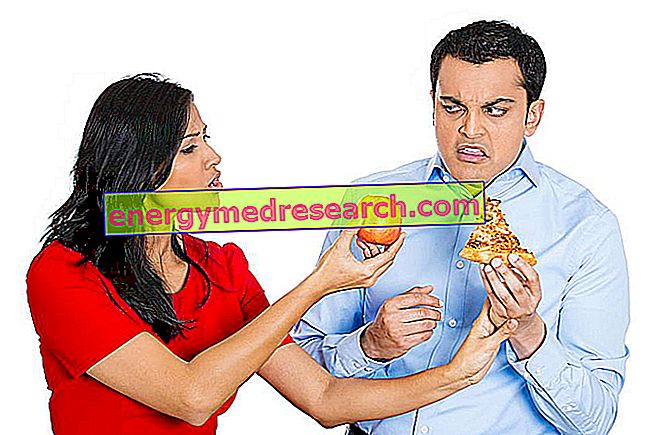Food safety
Food security is a very hot topic for the population, especially in this period when the earthquake in Japan was the protagonist. The safety of what you eat is in fact closely linked to the healthiness of the food, to the goodness of the same, consequently to the health of the person.
Earthquake in Japan
The damage suffered by some of the nuclear reactors of the Fukushima power plant following the earthquake of March 11, 2011, has provoked the alarm "food security", not only in the East, but also in Europe: fear is the common thread and represents the risk for possible contamination by radioactive isotopes.

The approach with which to address the food safety alarm is to wait for the Japanese authorities to ascertain the damage caused: in Italy the border controls on plants and on animal foods derived from Japan will have to be strengthened.
Food quality
More specifically, "food safety" is synonymous with hygienic-sanitary, nutritional and organoleptic quality of what is eaten, but not only: we must also focus on all those processes of production, processing, preparation and consumption of food, which they are used to guarantee the quality of the food itself. In fact, if only one of these processes suffers a hitch, it is no longer possible to guarantee the healthiness of the food, causing possible complications in the human organism.
HACCP and ISO standards
The current technology of the industrialized countries has gone so far as to guarantee the almost absolute safety of what we eat: in fact, there are some rules that must be scrupulously respected before the marketing of any product. The rules that protect food safety are summarized in: HACCP, which represents all the necessary measures for the hygiene of a given food, and ISO Standards, which are indispensable for the traceability of the product within the food chains.
Food preservability
Furthermore, due to the correct preservability of a food put on the market and for food safety, it is necessary to add other substances to that product, in order to improve its quality, making it more conservable: the addition of salt, sugar, alcohol and vinegar is an ancient practice, but still successfully applied today. Similarly, in order to preserve food safety, it is permitted to use some food additives, substances of natural or synthetic derivation that are intentionally added to the product in one of the phases of preparation, transport or storage of the same. Antimicrobials, preservatives, thickeners, gelling agents, flavor enhancers are just some of these additives allowed by law, to guarantee the healthiness of the food.
Contamination and pollution
But that's not all: sometimes there is the intervention of some unexpected (or unpredictable, like Japan) phenomena, which put food safety at serious risk: in fact, chemical contamination, biological pollution and various agents Physicists can put product quality at risk. For example, industrial activities can release dangerous substances in the atmosphere for food (and consequently also for humans): heavy metals, dioxins, pesticides can create serious problems for producers and consumers.
With regard to physical agents, reference is made to all those substances or residues that are voluntarily or not released in one or more stages of food preparation, ranging from cultivation to packaging of the finished product. The biological problem is sometimes the most dangerous: Salmonella, Escherichia Coli, Enterobacter sakazakii are just some examples of pathogenic microorganisms that can compromise food safety. From here, it is understandable how the adoption of a food prevention and control plan is of primary necessity.
The problem of food security grows exponentially in those countries hit by famine, where the risk of malnutrition, contagion and disease is very high: at the conclusion of this, one can understand the gravity of the Japanese case, when, in addition to the famine and the tragic moment, the possible nuclear contamination is also added.



